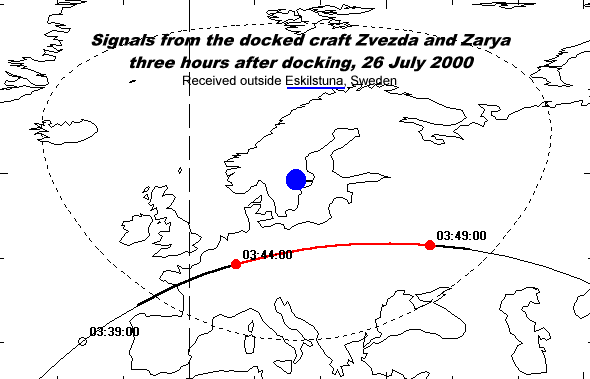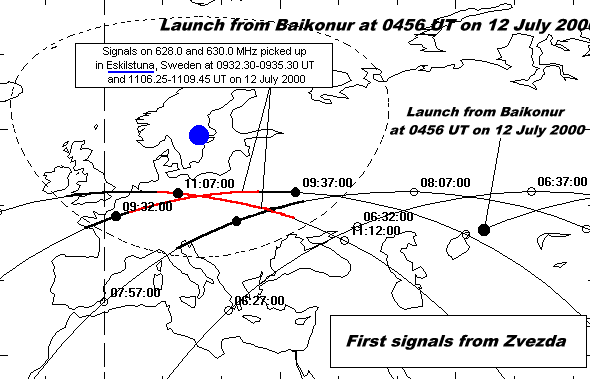
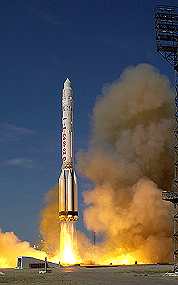 Sven
Grahn
Sven
Grahn
The launch mass of Zvezda was 20295 kg according to Vladimir Agapov. Zvezda is outwardly almost identical to the Mir base block, and its main structure is similar to all the Soviet/Russian civilian orbital stations launched since 1971.
.

The signals on 628.0 and
630.0 MHz are similar in character to those in the VHF region and described
elsewhere at this web site.
The pictures below show
that it is possible to pick up Zvezda with quite minimal gear! The Alinco
DJ-X10 scanner is of course a very powerful radio.
I picked up signals from
Zvezda on another nine occasions before the day of the docking.
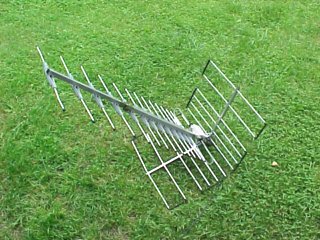
Standard UHF-TV antenna used on 628 and 630 MHz |
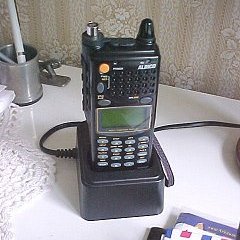
Alinco scanner being charged |
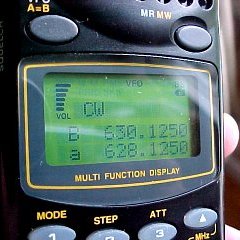
Alinco scanner tuned to the upper peaks of the FM telemetry spectra. CW and NFM modes used to hear the signals from Zvezda. |
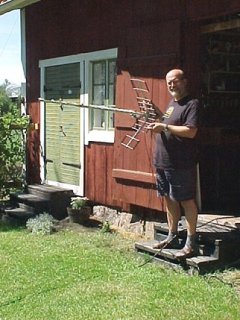
Hand-steering the UHF TV antenna while holding the Alinco scanner in the other hand. |
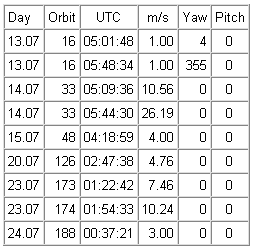 The
Zvezda to ISS (Zarya) by Zvezda took 12 days. Vladimir Agapov gave the
advance information of these maneuvers shown in the table on the right.
The
Zvezda to ISS (Zarya) by Zvezda took 12 days. Vladimir Agapov gave the
advance information of these maneuvers shown in the table on the right.
He also explained :
"Zvezda is manoeuvring
to catch up on Zarya toward an "aiming point" at the 219th orbit of Zvezda
over the South Atlantic at 00:13:31 UTC on July 26. At that point, Zvezda
should be under Zarya at a relative distance in radial direction no more
than 1.5 km and relative velocity along line of sight no more than 5 m/s.
Relative distances and velocities in two other directions should be equal
to zero.
After that, Zarya is to fly around Zvezda from above (the aiming point) at a distance no closer than 300 meters and get in front of Zvezda for the final phase of docking. So Zarya should be the leading object in orbit at that time. Initial contact (docking) between both modules is now scheduled for 00:54 UTC on July 26." (Actual docking time was 0044 UT)
The figure below shows the
orbital period of Zvezda and Zarya resulting from the series of maneuvers
that were executed. It turns out that during the final days of the rendezvous,
Zarya maneuvered down to meet Zvezda - just as Vladimir explained!
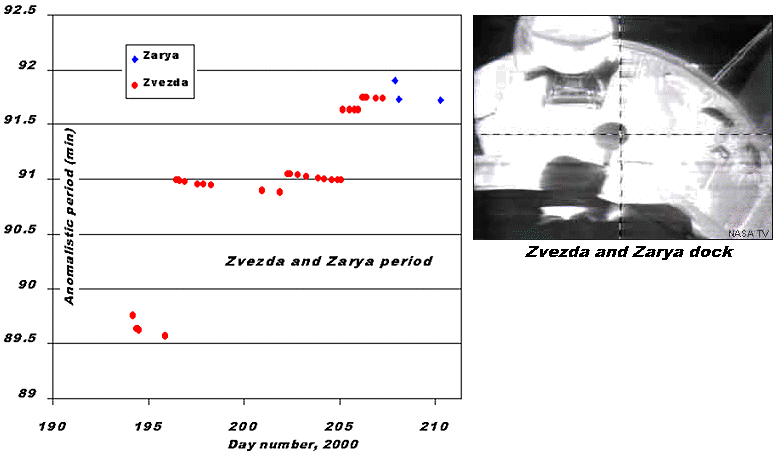
 Three
hours after the docking I picked up signals from the combined stack of
Zarya, Zvezda, and Unity (see table on the right and map below).
Three
hours after the docking I picked up signals from the combined stack of
Zarya, Zvezda, and Unity (see table on the right and map below).
Interestingly, the Zarya signals were stronger than those from Zvezda. The signals from the two parts were not strong at the same time, indicating that the two modules partly block each others signals.
